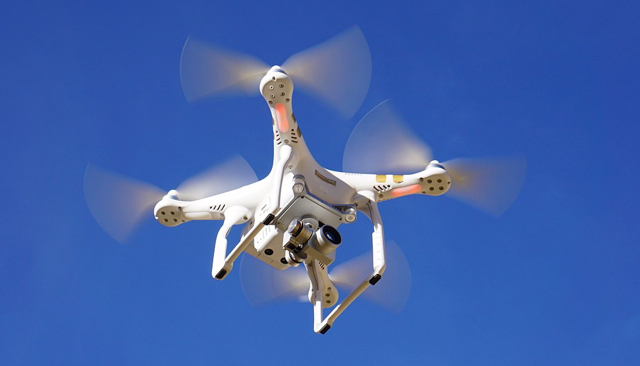The Federal Aviation Administration just issued rules, to take effect in August, for how businesses can use small drones, specifically for those weighing less than 55 pounds. Among the new restrictions are that drone speed must be kept under 100 miles per hour and that users may operate them during twilight only if they are equipped with anti-collision lights. The maximum altitude has also been lowered to 400 feet from 500 feet, and the age limit for operators also lowered, to 16 from 17 years old.
The Wall Street Journal notes that the FAA, however, left some significant safety issues unresolved. As a result, say some experts, the most efficacious use of drones is still out of reach. Nonetheless, drone operators now have a procedure to ask the FAA for exemptions, for everything from “night operations, extended flights beyond visual range and a single pilot controlling more than one drone.”
“Our focus here is to make this as streamlined as possible,” said FAA administrator Michael Huerta.
When it comes to inspecting infrastructure, there are already some exemptions: drones can fly above 400 feet to inspect a structure, although it must “remain within 400 feet of the structure at all times if it is exceeds the 400-foot ceiling.”
“This opens up a whole area of innovation and use cases that were to this point prohibited,” said Small UAV Coalition executive director Michael Drobac, whose advocacy group includes Amazon and Alphabet as members.
The House Transportation Committee’s ranking Democrat Rep. Peter DeFazio of Oregon notes that the new rules are “intended to create certainty and predictability for safe, authorized operations — to protect all users of the airspace as well as those of us on the ground.”
Drone manufacturers and users are also pleased to see some of the first official rules after a long process. “The new rules codify common sense,” said SZ DJI Technology policy lead Jon Resnick, representing the world’s largest drone maker.
But the drone community is still frustrated at rules they say, “stop far short of what is necessary to exploit the full capabilities of drones.” They want to use drones to inspect power lines, railroads tracks and cellphone towers, which they say will “offer huge economic benefits,” but the FAA estimates it will take them at least another year to issue rules “permitting routine small-drone operations over crowds or densely populated areas.”
Operations at night or in emergencies, which can make pre-takeoff preparations impossible, are even further off. The Association for Unmanned Vehicle Systems International chief executive Brian Wynne expresses the impatience of many in the industry, warning that, “We risk stunting the still-nascent industry and restricting the many beneficial uses of this technology.”
To those drone advocates, Huerta notes that, “With this new rule, we are taking a careful and deliberate approach that balances the need to deploy this new technology with the FAA’s mission to protect public safety.”
“This is just our first step,” he added. “We’re already working on additional rules that will expand the range of operations.”
Meanwhile, members of the film and television industries are applauding the rules that allow for production, according to The Hollywood Reporter.
“The FAA final rules will further enable the film and television industry to incorporate this innovative technology into great storytelling, while expanding opportunities for American workers and small businesses in the creative economy,” said Chris Dodd, chairman and CEO of the MPAA. “It is also very gratifying for our industry that filmmakers were able to pave a path for the broader commercial use of unmanned aerial systems.”
Related:
FAA’s Drone Rules Break New Ground, The Wall Street Journal, 6/24/16
A Drone Start-Up Explores Underwater, The New York Times, 6/27/16


No Comments Yet
You can be the first to comment!
Sorry, comments for this entry are closed at this time.